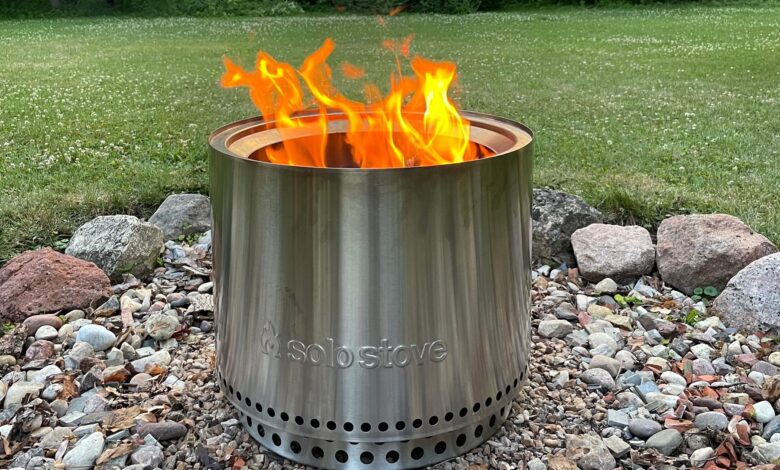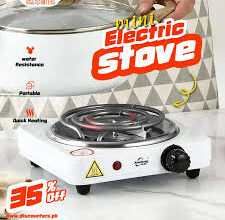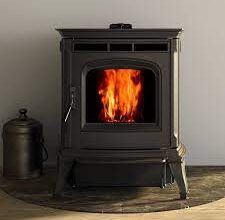Ultimate Guide to Solo Stove: The Best Smokeless Fire Pits and Stoves for Outdoor Enthusiasts 2024

Introduction to Solo Stove
Solo Stove has become a household name among outdoor enthusiasts, camping aficionados, and backyard adventurers. Known for its smokeless flame, unique design, and unparalleled efficiency, the transforms outdoor cooking and fireside experiences. This article will dive deep into what makes the a top choice, from the design and features to user experiences, maintenance, and more. Let’s explore the world of and see why it’s worth investing for occasional campers and dedicated wilderness explorers.
What is a Solo Stove?
A Solo Stove is a highly efficient, portable fire pit and stove designed for minimal smoke output, allowing for a pleasant and eco-friendly outdoor fire experience. These stoves are crafted with unique airflow technology, creating a smokeless flame that’s perfect for campfire cooking or just relaxing around a fire. The combines modern technology with timeless campfire traditions, giving users a convenient way to enjoy outdoor fires without the hassle of smoke or complex setups.
Available in various models, are often used for camping, backyard gatherings, beach trips, and even emergencies. Each model, from the smaller Lite to the larger Yukon, is crafted from stainless steel, making it durable and weather-resistant.
The magic of the Solo Stove lies in its clever design, which maximizes fuel efficiency and minimizes smoke. With its double-wall structure, this stove allows for ample airflow, which results in a complete burn of the fuel, leaving little to no ash or residue behind.
The History and Evolution of the Solo Stove

The story began in 2011 when two brothers, Jeff and Spencer Jan, set out to create an innovative, eco-friendly camping stove that anyone could use. They wanted to design something simple, yet highly efficient, for outdoor enthusiasts who loved nature but didn’t want the hassle of dealing with smoke-filled fires. Their goal was to develop a stove that worked effectively even in windy or wet conditions while producing less smoke than traditional campfires.
As Solo Stove gained popularity, it evolved from a camping stove to a broader outdoor experience product line. With various sizes and styles added over the years, the brand has expanded to meet the needs of different types of users. The Ranger, Bonfire, and Yukon are designed for backyard use and offer unique sizes for small, medium, and large fires, respectively.
Today, continues to grow in popularity and is beloved for its eco-conscious design, durability, and efficiency. Whether it’s cooking a quick meal in the wilderness or enjoying a smoke-free fire in the backyard, the has become synonymous with modern outdoor fireside enjoyment.
- Key Features of Solo Stoves
The Solo Stove is well-known for several standout features that set it apart from traditional stoves and fire pits. Here’s a breakdown of what makes this stove so popular:
- Double-Wall Construction
One of the most iconic features of the is its double-wall design. This construction creates an airflow system that allows for an efficient burn. Cool air enters the bottom, is heated between the walls, and then exits through the top vents, allowing the fire to burn hotter with less smoke.
- 304 Stainless Steel Build
The Solo Stove is made from high-quality 304 stainless steel, known for its durability and resistance to rust. This makes the stove suitable for various outdoor conditions, and it ensures a long lifespan even with regular use.
Precision Base Plate and Vent Holes
The base of the features strategically placed holes that allow for optimal airflow. This base plate also raises the fire off the ground, protecting the surface underneath and creating a more efficient burn.
These features, along with the stove’s portability, make a preferred choice for many outdoor enthusiasts who appreciate a clean, smokeless, and efficient fire.
- How Does the Solo Stove Work?
The impressive performance comes from its unique airflow technology. Unlike traditional campfires that produce smoke due to incomplete combustion, the design promotes a complete burn of the wood, leading to minimal smoke and maximum heat. Here’s how the Solo Stove achieves this:
- Bottom Ventilation
Air enters through holes at the bottom of the stove, feeding oxygen to the fire from below. This initial combustion process ignites the wood and creates a hot base.
- Secondary Combustion
Heated air rises between the double walls and exits through vents near the top. This oxygen-rich air meets the rising gases from the fire, igniting them a second time and creating what’s called “secondary combustion.” This secondary burn is what minimizes smoke and results in a more complete combustion.
Efficient Heat Production

The result of this two-stage combustion is a highly efficient fire that uses less wood, produces more heat, and leaves behind minimal ash.
- Types of Solo Stoves: Comparing Models
offers several models tailored to different uses and settings. Here’s a comparison of the main models:
- Solo Stove Lite
The Solo Stove Lite is the smallest model, designed for backpackers and ultralight campers. It’s compact and lightweight, making it easy to carry, and it works well with twigs, leaves, and small pieces of wood.
- Solo Stove Titan
The Titan is slightly larger and designed for groups of two to four. It provides more heat and can handle larger pots, making it ideal for camp cooking.
- Solo Stove Campfire
The Campfire model is the largest portable stove option, suitable for groups of four or more. It’s designed to handle heavier cooking tasks, perfect for family camping trips.
Each model has specific strengths, but they all share Solo Stove’s efficient, smokeless design, making them versatile for various outdoor scenarios.
- Benefits of Using a Solo Stove
The offers multiple benefits, from portability to eco-friendliness, making it a must-have for outdoor enthusiasts. Here’s why users love it:
- Portability and Convenience
Solo Stoves are compact and lightweight, allowing users to take them anywhere. Whether you’re backpacking or hosting a backyard gathering, the is easy to carry and set up.
- Environmentally Friendly
The smokeless design and efficient burn reduce the amount of wood required, which minimizes environmental impact. Plus, because the produces less smoke, it’s better for air quality.
- Easy to Clean
With minimal ash left after burning, cleaning up after using a is simple and hassle-free. The efficient burn means less residue, so users spend less time maintaining the stove.
- Popular Uses of Solo Stoves
The versatility of the has made it popular for various uses, from camping to backyard get-togethers. Here are some common ways to use a Solo Stove:
- Camping
The Lite and Titan are perfect companions for camping trips, allowing users to cook meals, boil water, and stay warm without the need for propane or gas.
Beach Bonfires
models like the Bonfire and Yukon are popular for beach gatherings. They’re easy to set up on the sand, providing a smoke-free fire experience by the water.
- Backyard Gatherings
smokeless fire pits, especially the Bonfire and Yukon models, are great for hosting backyard gatherings. Their modern design makes them an attractive centerpiece while providing warmth without smoke.
- Performance and Efficiency: What to Expect
Solo Stoves are known for their high performance and efficiency. Thanks to the double-wall construction and secondary combustion, these stoves burn fuel completely, producing a strong and steady flame. Here’s what you can expect from performance:
- Heat Output
The Solo Stove produces an intense amount of heat, particularly with models like the Bonfire and Yukon. These larger models are ideal for chilly outdoor evenings, as they can keep a group of people warm.
- Fuel Efficiency
Solo Stoves are incredibly fuel-efficient, meaning you’ll use less wood compared to a traditional fire pit. This is beneficial for both convenience and sustainability, as it conserves natural resources.
- Low Smoke Production
One of the most loved features of the Solo Stove is its low smoke output. Users can enjoy a fire without constantly adjusting their position to avoid smoke, making it a more enjoyable experience.
- Setting Up and Using a Solo Stove
Using a Solo Stove is straightforward, but there are some tips for setting it up properly to get the best experience. Here’s a step-by-step guide:
- Choose Your Location: Place your Solo Stove on a stable, non-flammable surface.
- Gather Fuel: Solo Stoves are designed to burn natural fuel sources like sticks, twigs, and small logs.
- Light the Fire: Add kindling and ignite the fire. As it catches, add more substantial fuel like larger sticks or logs.
- Monitor the Fire: Adjust your fuel as needed and enjoy the smokeless flame!
Setting up and lighting a Solo Stove takes only a few minutes, making it easy to use on the go or at home.
- Maintaining Your Solo Stove: Tips and Tricks
Proper maintenance can extend the life of your Solo Stove. Here are some tips:
- Cleaning: Remove ash after each use and use a soft brush for any soot.
- Storage: Store in a dry place and cover to prevent exposure to the elements.
- Avoid Harsh Chemicals: Use only mild soap and water if cleaning is necessary; avoid harsh chemicals.
Following these tips will keep your Solo Stove in excellent condition for years to come.



